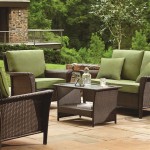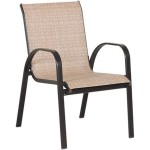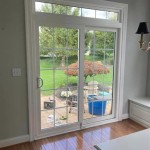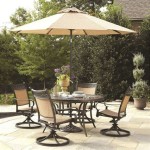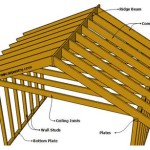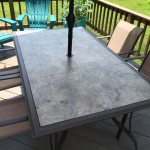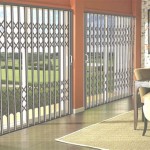Material Patio Covers: A Guide to Choosing the Right One
Patio covers offer a practical and aesthetically pleasing way to extend the usability of your outdoor space. By providing shade and protection from the elements, they create a comfortable and inviting area for relaxation, dining, or entertaining. Choosing the right material for your patio cover is crucial, as it influences its durability, appearance, and overall functionality. This article will explore various material options for patio covers, providing insights into their advantages and disadvantages to help you make an informed decision.
Wood
Wood is a classic and popular choice for patio covers, offering a natural and warm aesthetic. It's readily available, affordable, and can be easily stained or painted to complement any existing décor. Wood patio covers offer excellent insulation, providing natural shade and reducing heat gain from the sun. However, wood requires regular maintenance to prevent rotting, warping, and insect infestation. It's also susceptible to moisture damage, requiring protective treatments and proper drainage to ensure longevity.
Aluminum
Aluminum patio covers are known for their durability, lightweight construction, and low maintenance requirements. They resist corrosion, are highly resistant to moisture, and don't require painting or staining. Aluminum is also a good conductor of heat, making it ideal for areas with hot climates. However, aluminum can be prone to dents and scratches, and its modern aesthetic may not complement all architectural styles. The material can also become hot in direct sunlight, requiring additional shading solutions.
Vinyl
Vinyl patio covers combine the affordability of wood with the low maintenance benefits of aluminum. They are highly resistant to moisture, rot, and insect infestation, making them a practical option for humid climates. Vinyl patio covers come in various colors and textures, mimicking the appearance of wood or stone. However, vinyl can be susceptible to fading in direct sunlight and may not withstand extreme temperatures as well as other materials. It's also relatively lightweight, making it less resistant to strong winds.
Fiberglass
Fiberglass patio covers offer a unique combination of strength, durability, and versatility. They are highly resistant to moisture, rot, and insect infestation, making them an ideal choice for coastal or humid environments. Fiberglass is also fire-resistant and can be molded into various shapes, allowing for custom designs and unique architectural elements. However, fiberglass can be more expensive than aluminum or vinyl, and its maintenance requirements can be more complex. It also has a less natural aesthetic compared to wood or stone.
Pergola
Pergolas are a distinct type of patio cover that typically use wood or metal as their primary structural material. They offer a lightweight and airy design, allowing natural light and ventilation while providing shade from the sun. Pergolas are often customized with vines, plants, or fabric coverings to personalize their look and enhance their functionality. Their open design allows rainwater to pass through, minimizing the risk of water damage compared to solid patio covers. However, pergolas offer less protection from rain and wind, making them less suitable for areas with frequent storms. They also require regular maintenance and cleaning to maintain their structural integrity and aesthetic appeal.
Factors to Consider When Choosing a Material
Several factors should be considered when selecting the right material for your patio cover:
- Budget: Determine the range you are comfortable spending on your patio cover. Material costs vary widely, and additional features, such as custom design or installation, can further impact the overall expense.
- Climate: The climate in your area will significantly influence material choice. Humidity, rainfall, and temperature extremes should be considered to ensure the chosen material can withstand the elements.
- Aesthetic Preference: Consider the overall architectural style of your home and the desired look for your patio cover. Some materials, like wood, offer a more natural and rustic aesthetic, while others, like aluminum, provide a modern and sleek design.
- Maintenance Requirements: Evaluate your willingness and ability to maintain the patio cover. Some materials require regular cleaning, painting, or staining to preserve their appearance and functionality. Others require minimal upkeep and are more resistant to damage from the elements.
- Functionality: Determine the primary function of your patio cover. If you prioritize shade and protection from the sun, a solid cover might be more suitable than a pergola. If you require additional ventilation or light, a pergola or a cover with open sections might be a better choice.
By carefully considering these factors and researching the unique properties of each material, you can choose the best option for your specific needs and preferences. This will ensure your patio cover provides the desired functionality, aesthetic, and durability for years to come.

12 Beautiful Shade Structures Patio Cover Ideas A Piece Of Rainbow

Patio Covers General Awnings

Fabric Shade Structures Custom Tension Valley Patios La Quinta Indio Palm Desert Aluminum Patio Cover Specialists

What Is The Best Material For A Patio Cover Universal Awning And Sign

Choosing The Best Patio Covers For Outdoor Entertainment

Shade Cloth Valley Patios Palm Desert La Quinta Indio Rancho Mirage Custom Aluminum Patio Cover Specialists

6 Types Of Patio Covers To Consider Design Swan

Types Of Patio Roofing Materials Covers

Diy Alumawood Patio Cover Kits Shipped Nationwide

4 Tips For Choosing A New Patio Cover

